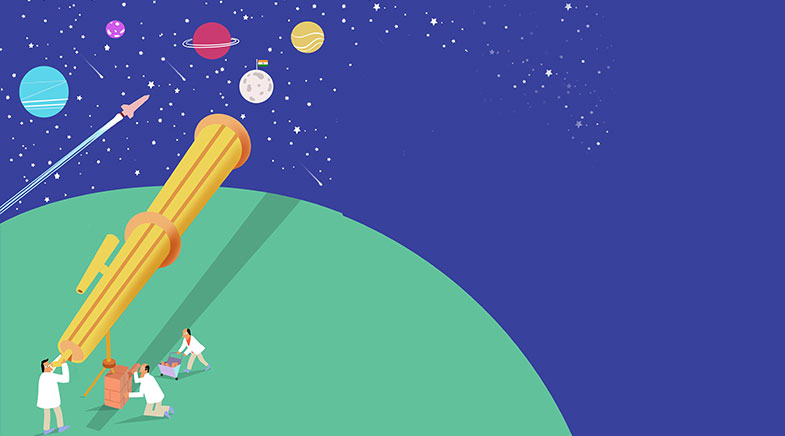Music, and a milestone
-
- from Shaastra :: vol 03 issue 02 :: Mar 2024

As Shaastra becomes a monthly magazine, we commit ourselves anew to top-notch sci-tech journalism.
Work on Shaastra magazine began about three years ago with just two journalists on board. It was initially an electronic magazine, and we had no in-house team or schedules to speak of. We relied on freelance journalists, and published an issue whenever we finished producing it. To launch the magazine in print took us nearly a year.
Our Cover Story on music shows the broader impact of technology, and how advances in engineering/AI help make better products.
That was our first major milestone. We still did not have a large in-house team; freelance journalists continued to contribute stories in fair measure. Science and technology journalism is not practised extensively or in great depth in India, and it was not possible to hire trained journalists in large numbers. Our answer to this problem was to develop a team over a period, hiring students of science with an interest in journalism, and then training them in the art of writing. It was a long and arduous journey, but it has got us here.
GOING MONTHLY
With this issue, we cross a second milestone. Shaastra is now a monthly magazine, to be published in the first week of every month. Our team is still not fully formed but we wanted to hit the stands with more regularity, giving our readers a larger menu of stories every month. It took us two years after the print launch to get here. During this period, Shaastra has experimented with several new ideas in design and storytelling. The experiments will continue, but the magazine has developed an identity that is already recognisable to its regular readers.
This identity is as a global magazine with an Indian perspective. We do global stories that are relevant to India, and Indian stories with the rest of the world in mind. The domain of the magazine continues to be broad: everything that bears on science is within its purview, except for politics. Shaastra stories cover the entirety of the science/technology cosmos: from the depths of the atomic nucleus to the edge of the known universe; from the intricacies of life to the immediacies of providing good healthcare; from quantum chemistry to changes in the structure of large industries.
Sustainability is a key theme in the magazine, as is economic development through R&D. Shaastra will frequently explore how developments in science and technology influence the lives of people. We will continue to do book reviews, crosswords and other fun stuff in our back pages, with brief glimpses into the past in our Time Machine section. The magazine is being developed as a complete package. We expect to keep growing and broadening the scope of Shaastra as its team grows.
In this first monthly issue, Sweta Akundi investigates a phenomenon that rarely gets wide public attention: how technology influences the creation of music. This story has been on our radar for six months, and Sweta worked on it for three months. During our surveys of the music and technology landscape, two things stood out. One was how recording technology has evolved rapidly in the last decade. The other was how modern engineering is being used to develop new instruments and extend the scope of the old ones.
This is probably a turning point in the history of music. Till the end of the last century, the aim of engineering was (largely) to reproduce music created by human beings with high fidelity. This effort continues. In fact, engineers are trying to get the live theatre experience home, in unprecedented ways. However, a good part of our main story is on how technology makes the job of producers easier. Another part is on how researchers are trying to understand how music creates its impact on the human mind. In other words, they are trying to parse music, laying a foundation for computers to create music that humans can respond to.
We chose music as our Cover Story mainly to show the broader impact of technology. And to show how advances in engineering and artificial intelligence can help artists make better products. Music, as all art, is an expression of the human mind. Computers do not live a human life and, therefore, have no emotions or ideas to express. Technology is only showing us a mirror.
Have a
story idea?
Tell us.
Do you have a recent research paper or an idea for a science/technology-themed article that you'd like to tell us about?
GET IN TOUCH














